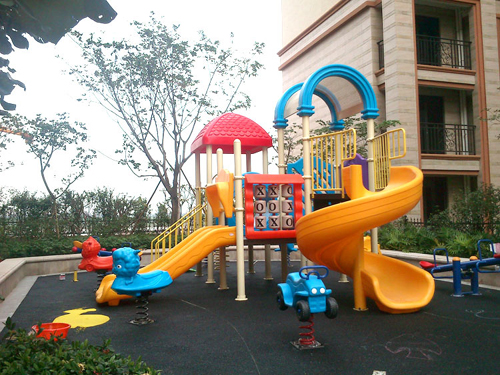Product Categories
- New outdoor Playground (29)
- Small Size Playground (40)
- California City (8)
- Nature Series (18)
- Space City (10)
- Rocket Series (9)
- Fantasyland Series (16)
- Animal Series (10)
- Tree House (15)
- Ice World (4)
- Pirate Ship (5)
- Tropical Series (4)
- Water Park (5)
- Fancy Series (24)
- Ocean Theme (18)
- Swings And Slides (22)
- Full Plastic (14)
- Fun Fitness (9)
- Spring Rider (59)
- Climbing Wall (21)
- Small Swing (20)
- Wooden Bench And Bin (24)
- Safety Mat On Floor (0)
News
- Looking for cheap home playground equipment?
- How to transform your backyard into a fun play area?
- Quotes of Cheap Playground Equipment in April.2017
- How Playground Culture Can Help A Child With Autism?
- Can outdoor play structure help kids gain self-confidence?
- Playground Equipment Is Simple & Effective For Children
- Enquiries of Cheap Playground Equipment in March.2017
- Playground Equipment: Let Your Child Create Sweet Memories
- Can I get cheap playground equipment for my community?
- Plastic Playground Equipments Keep Your Children Safe
Article
playground equipment exhibition
Children need to play; according to the American Academy of Pediatrics, play promotes healthy development and maintains strong child/caregiver bonds. Physical play not only helps children develop strength, coordination, balance and flexibility, it helps them use those skills to problem-solve and to imagine. Unfortunately, not every child has a nice backyard or safe playground in which to play every day. But there are things that parents and caregivers can do to increase physical play opportunities.
Spend a little more time at school. If the children attend a school with a safe playground, try to spend some extra time there. Arrive early to drop them off or stay late after pickup and play on the playground together.
Find a local community center. Many community centers and YMCAs not only have classes for kids, they have open play times in their gyms and pools. Call around to find one that you can bring the children to on a regular basis.outdoor play structures
Be ready to move the furniture. Even if your place is small, try to find a way to open the space regularly. You might move a coffee table to the side or the dining table against the wall.
Create an obstacle course. Use pillows, stools and beanbags to create an obstacle course around the living room, where children have to leap from pillow to pillow and crawl under furniture to reach the finish line. This will work better for young children, unless you have a lot of indoor space.
Make a trade with a friend or family member. If you know someone who has the perfect backyard, see if you can borrow it or share it on a regular basis. You might trade off indoor babysitting or weeding time to make it beneficial to both parties.
Look for open spaces. Even if you don't have a backyard or nearby playground, it doesn't mean your child can't play outside. As the National Center for Physical Development and Outdoor Play points out, kids also need open space to run, jump, skip and roll in. So the green area beside your apartment complex or down the road can still benefit children, even if they're not specifically designed for them.
Make a race course. Use duct or painters' tape to make roads on your floor. Then encourage kids to follow the course pushing small cars. Depending on your space, you could even let younger children ride scooters or trikes along the race course.
Play ball in the house. Obviously, you're not going to get a game of baseball going, no matter how big your living room. But you can play catch by rolling a smaller ball to each other, or bouncing a larger one back and forth. Another option is to play catch with a balloon.
Have dancing time. Turn on the music and have a dance party. Encourage children to come up with their own crazy moves.outdoor play structures
Outside the Home
Inside the Home




